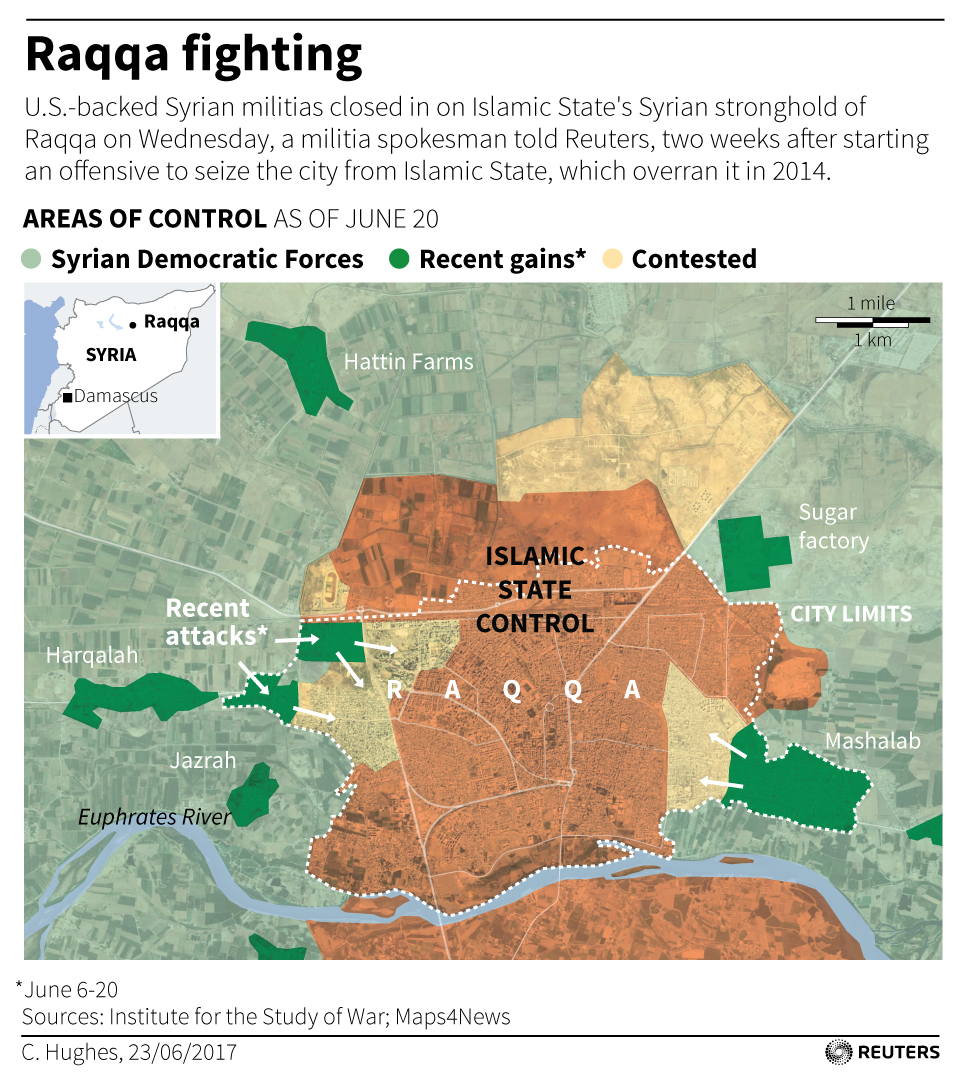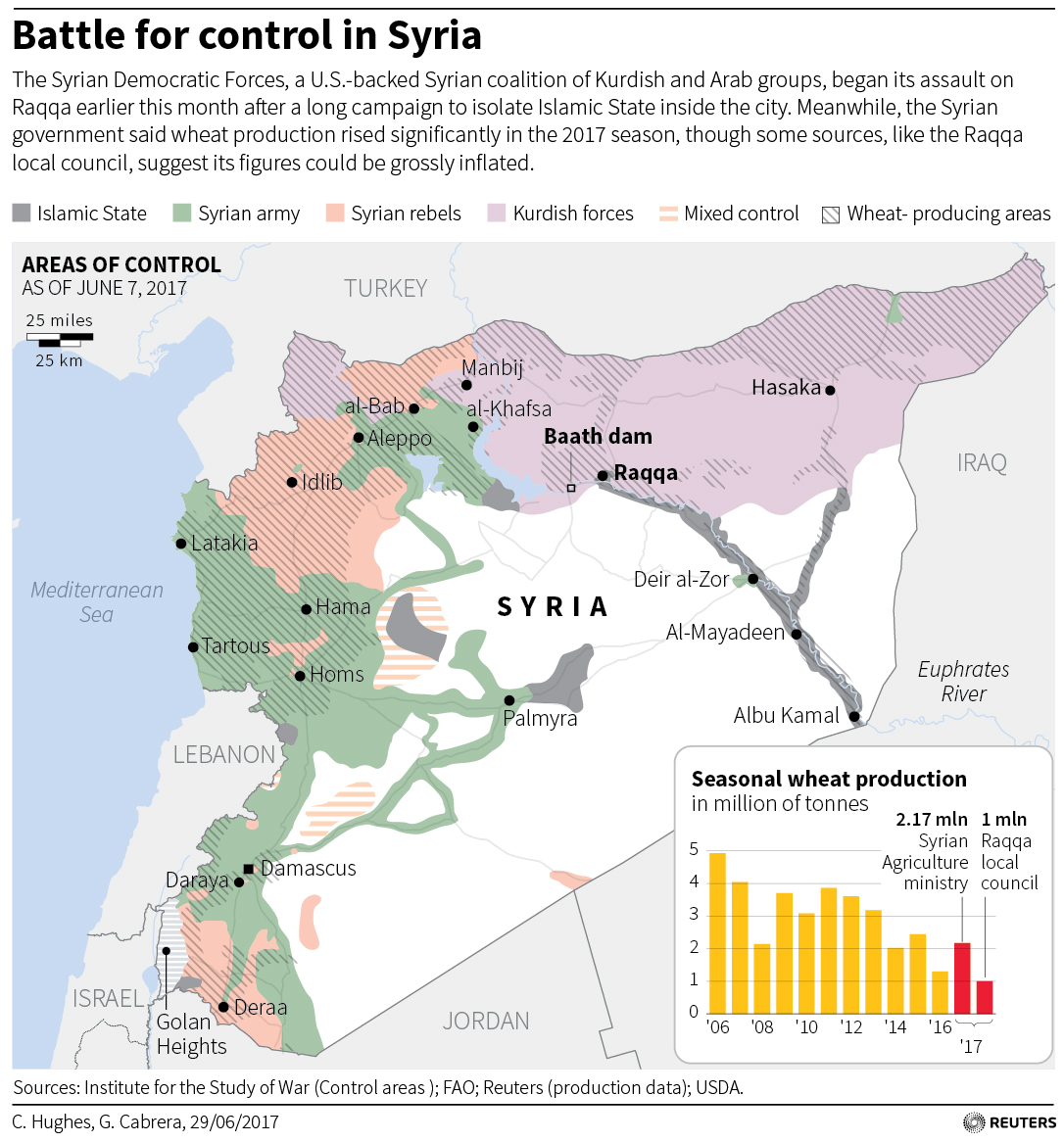
BEIRUT (Reuters) – Islamic State mounted a fierce counter-attack against the Syrian Democratic Forces (SDF) alliance of militias in the city of Raqqa on Friday, but there were divergent accounts of its success in regaining ground.
The Syrian Observatory for Human Rights, a British-based war monitor, said the group had managed to regain control over most of Raqqa’s industrial district, but the SDF said fighting was limited to the edges of that area and the attack was repelled.
West of Raqqa, the Syrian army advanced on Friday, driving the group from its last territory in Aleppo province in a move that relieves pressure on an important government supply route, a Syrian military source said.
The SDF, a U.S.-backed alliance of Kurdish and Arab groups, took the industrial district this month in its biggest gain so far in Islamic State’s de facto Syrian capital of Raqqa.
It said on Friday heavy clashes had taken place since late Thursday in east Raqqa, where the industrial district is located, in the areas of al-Rawdha, al-Nahdha and al-Daraiyah.
However, the Syrian Observatory for Human Rights, said Islamic State had regained control over most of the industrial area in fierce fighting.
The SDF, on its social media feed, acknowledged there had been intense clashes but said the whole industrial district was still in its hands and the attack had been thwarted.
ARMY ADVANCE
The army took the last stretch of the Ithriya-Rasafa road, part of the highway from Hama to Raqqa, forcing Islamic State to withdraw from a salient it held to the north, the military source and the Observatory said.
Islamic State had used that salient, an area containing a range of hills and a dozen villages, to mount frequent attacks on a different road linking Ithriya to Khanaser, part of the government’s only available land route to Aleppo.
The capture of the Ithriya-Rasafa road also shortens the Syrian army’s route to its battlefront with Islamic State south of Tabqa, a possible route for its multi-pronged offensive to relieve the government’s enclave in Deir al-Zor.
Although Islamic State has withdrawn from the salient east of Khanaser, the army has not yet combed the entire area, the Syrian military source said.
On Thursday, the Observatory said the SDF had managed to take the last stretch of the Euphrates’ south bank opposite Raqqa, completely encircling Islamic State inside the city.
Since all Raqqa’s bridges were already destroyed, and the U.S.-led coalition was striking boats crossing the river, the city had already been effectively isolated since May.
Naser Haj Mansour, a senior SDF official, told Reuters on Thursday he thought it could be “maybe more than a month or a month and a half” before the group took the city. Previous SDF timescales for its war on Islamic State have proven optimistic.
Beyond Raqqa, Islamic State still retains most of the 200km (130 mile) stretch of the Euphrates valley flowing to the border with Iraq. The Syrian army still holds a big enclave in Deir al-Zor, the area’s largest city, on which it is slowly advancing from the direction of Palmyra.
(Reporting by Angus McDowall; Editing by Alison Williams and Angus MacSwan)







